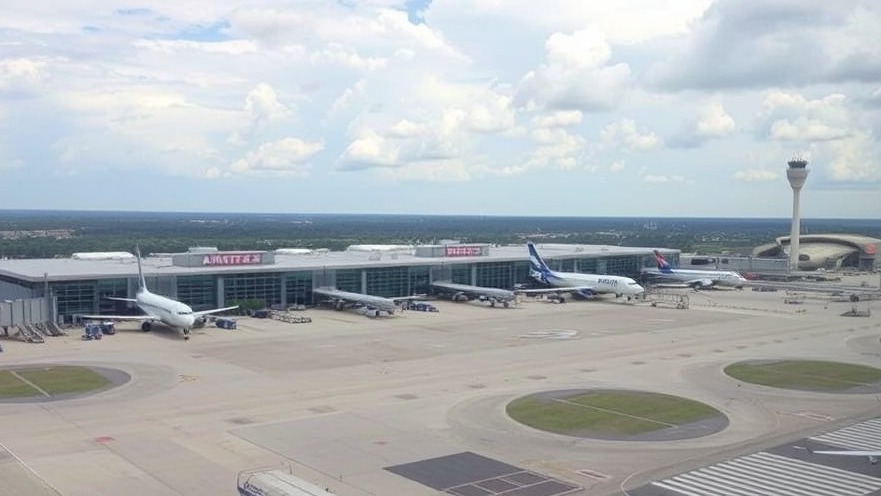
Passenger Traffic Trends: A Closer Look at Austin's Air Travel
The latest report from Austin-Bergstrom International Airport (AUS) reveals a slight decline in passenger traffic for July 2025, marking a 0.17% decrease compared to the same period last year. Despite soaring into summer travel season, total passenger numbers reached 2,036,077, highlighting a nuanced landscape for Austin's aviation sector. With enplanements reflecting a marginal increase of 0.11%, some airlines experienced notable fluctuations in their passenger counts, indicating changing consumer behavior amidst ongoing economic variables.
The Airline Landscape: Winners and Losers
Examining airline performance, Southwest Airlines, Austin's primary carrier, saw a drop of 1.5% in passenger counts, carrying 834,101 travelers. On the contrary, Delta Air Lines surges ahead with a substantial 22.5% increase, carrying 374,211 passengers. This divergence raises crucial questions about airline strategies and market conditions affecting travel demand. Other carriers, like Frontier and Spirit, demonstrated impressive gains, signaling shifts in traveler preferences and economic conditions.
Air Cargo Context: Key Insights for Businesses
On the cargo front, July 2025 evidenced a more significant drop, with air cargo totals decreasing by 12.33% year-over-year to 22,718,483 lbs. This decline may affect local businesses relying on air freight for supply chain efficacy. Companies must adapt to these fluctuations, as waiting for air cargo shipments may delay product availability. Insights into these trends can aid businesses in strategizing logistics and inventory control effectively.
A Longer View: Trends from January to July 2025
When considering the overall traffic from January to July 2025, passenger activity shows a downward trajectory, with a drop of 3.86% in total passenger counts compared to the same period last year. Southwest, American Airlines, and Alaska Airlines noted substantial declines, suggesting systemic shifts that could redefine air travel norms in Austin. Businesses, especially those tied to tourism and hospitality, might need to recalibrate expectations based on these evolving patterns.
The Broader Economic Impact of Austin's Aviation Decline
The reduction in both passenger and cargo traffic at AUS poses potential challenges for Austin's economy, notably affecting sectors like tourism, hospitality, and transport. As the city works to maintain its status as a vibrant economic hub, understanding these trends is vital for strategic planning. Engagement with local government and stakeholders may become critical as residents and businesses seek to adapt to these changes.
What This Means for Austin Residents
For residents aged 25 and over, the implications of reduced air traffic are multifaceted. As business travel decreases, local establishments may see a downturn in customers, which could lead to tighter budgets and potential job losses. Staying informed via local news outlets and engaging in community decision-making processes will be crucial in navigating these changes and advocating for policies that promote sustainable growth.
A Call To Action: Engage with Local News and City Initiatives
The evolving passenger and cargo landscape at Austin-Bergstrom International Airport necessitates active engagement from residents. Staying informed about breaking news and city council updates can empower the community to advocate for improvements. Additionally, participating in local forums and public hearings can ensure that voices are heard in shaping Austin's transportation future. Together, we can influence positive change as we address these emerging challenges.
 Add Element
Add Element  Add Row
Add Row 



Write A Comment